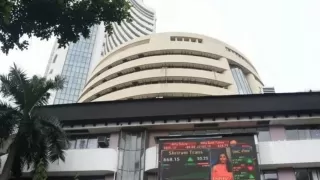Today, the Sensex plunged by over 1,000 points, leaving investors anxious. A combination of domestic concerns and global market trends drove the sharp decline. Below are the 5 key reasons that triggered this market downturn and how they impacted the financial sector.
1. Concerns Over Bank Loan and Deposit Growth
The gap between bank deposit growth and credit growth raised alarms about potential liquidity issues. Major financial stocks saw a drop as investors worried about upcoming data on bank loans, deposits, and the banking sector's ability to meet loan demand.
2. Anticipation of US Non-Farm Payrolls Report
Global markets, including India's, were rattled by the anticipation of the US non-farm payrolls report. Investors feared that if the August US jobs data showed a rise in unemployment, it could lead to the Federal Reserve cutting interest rates by 50 basis points, shifting market expectations.
3. SEBI’s Deadline on FII Disclosure Norms
The SEBI deadline on stricter foreign institutional investor (FII) disclosure norms also spooked the markets. Although this change won’t impact long-term investments, it caused short-term volatility, adding to the Sensex's losses.
4. Global Market Sentiment
A global market decline, including drops in indices such as Nasdaq, Nikkei, S&P futures, and Stoxx 600, influenced Indian markets. The uncertainty ahead of the US jobs report contributed to a bearish mood, further dragging down the Sensex.
5. Foreign Institutional Investors Turn Sellers
FIIs became net sellers on September 5, offloading equities worth Rs 688 crore, putting additional pressure on the market. This significant sell-off signalled short-term concerns and deepened the market's downward trend.
The Sensex's fall can be attributed to domestic and global factors, from banking concerns to global economic uncertainty. As investors navigate these challenges, staying informed about market movements and global events is crucial.
Also Read: Top 8 Websites for Indian Stock Market Investors in 2024




























